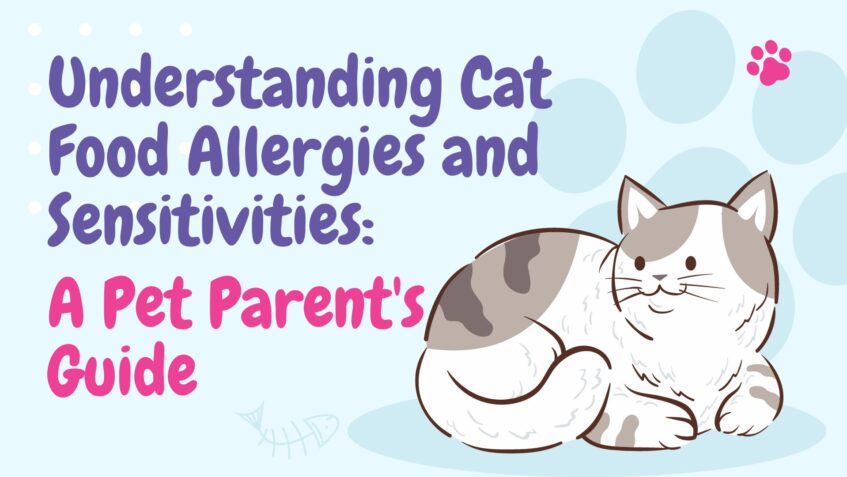Understanding Cat Food Allergies and Sensitivities: A Pet Parent’s Guide 🐱🍽️
Navigating the world of feline health can be complex, especially when it comes to distinguishing between cat food allergies and sensitivities. While a detailed explanation from your veterinarian is crucial, let’s shed some light on the general differences and what signs to look out for.
Cat Food Sensitivity: Unraveling the Digestive Mysteries
Also known as food intolerance, sensitivities primarily affect the digestive tract, often triggered by specific ingredients in the food. Your cat might experience digestive issues like loose stools, signaling an upset stomach. Common intolerances include gluten, wheat, dairy, and more, requiring specialized cat food tailored for sensitive stomachs.
Signs of Cat Food Sensitivity:
- Diarrhea
- Vomiting
- Frequent Bathroom Trips
Cat Food Allergy: Unmasking the Culprit
Allergies, while not always more severe, can manifest beyond the digestive tract, causing a range of issues. Symptoms may start subtly and intensify over time due to continuous exposure to specific ingredients. For instance, even with years of the same diet, a cat can develop an allergy to a particular protein, necessitating a diet change.
Symptoms of Cat Food Allergies:
- Diarrhea
- Vomiting
- Ear Infections
- Skin Irritation
- Persistent Scratching
- Hair Loss
- Poor Coat Health
- Skin Lesions
Common Food Allergies in Cats:
- Lamb
- Whitefish
- Dairy
- Beef
When to Consult a Veterinarian:
If you notice any signs of food allergies or sensitivities in your cat, prompt veterinary attention is crucial. While sensitivities may be observed through changes in stool, allergies’ symptoms can be subtle and escalate over time. Contact your vet as soon as you detect alterations in behavior, digestion, or coat health.
Choosing Specialized Cat Food:
The purchase of cat food tailored for allergies or sensitive stomachs should follow your vet’s treatment plan. Your vet may recommend a specific diet or authorize a suitable cat food. Avoid self-prescribing, as there’s no one-size-fits-all solution. Stick to your vet’s guidance to determine the best diet for your cat’s health and happiness.
Smooth Transition to New Cat Food:
Abrupt dietary changes can upset your cat’s stomach. Gradually transition to new cat food, mixing small amounts with their current food. The transition period varies, with some cats taking a few weeks, especially those with sensitive stomachs. Expect mild stomach upset during the transition, emphasizing the need to take it slow.
In conclusion, your pet’s well-being is best served by consulting a vet for any symptoms related to food allergies or sensitivities. Let your vet assess your cat’s condition and guide you on whether specialized cat food is necessary. Your furry friend deserves the best care, and with professional advice, you can ensure their health and happiness.
You may also visit – https://www.facebook.com/angkopparasahayop





